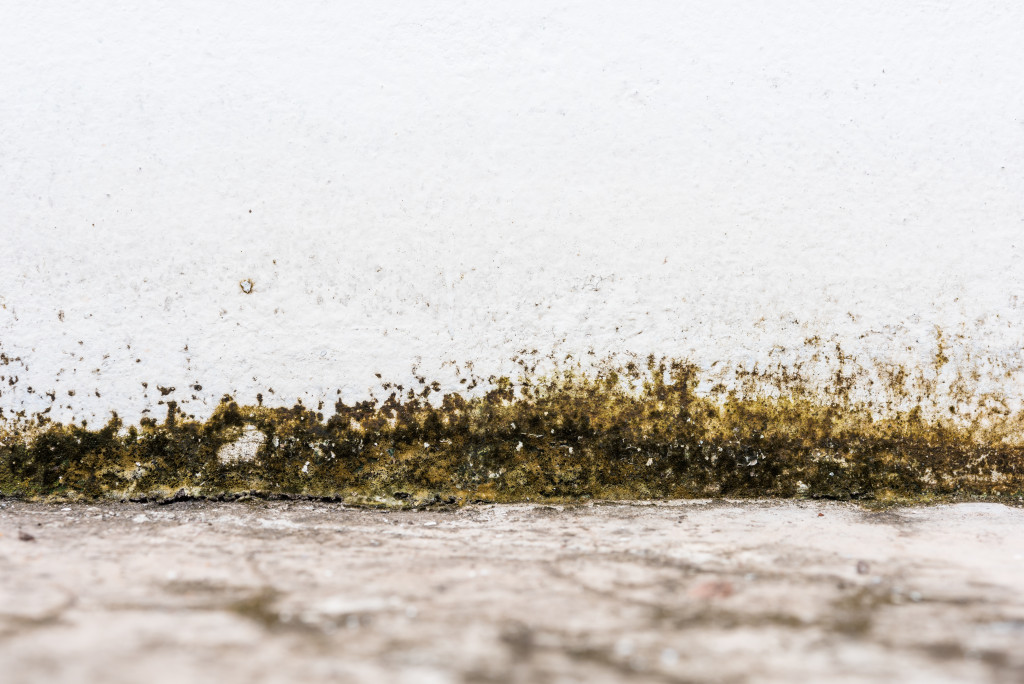Your home is a place that should be safe and comfortable for you and your family. However, it can also be home to all potential dangers, some invisible to the naked eye. For example, bacteria and viruses can quickly spread through your home, leading to illness and even death.
Fungi can also live inside your home. They might not be as dangerous, but they have the potential to ruin your home before you can do anything about it. One particular fungus that you should know about is mold.
What is Mold?
Mold is a type of fungus that can grow indoors or outdoors. It thrives in warm, moist, and humid environments and can quickly spread through your home if left unchecked. There are over 100,000 different types of mold, but only a handful of them can cause serious health problems for you and your family.
What Does Mold Look Like?
Mold usually appears as black, green, white, or brown patches on walls, ceilings, or floors. It can also look like fuzzy growths or slimy stains. You might not be able to see mold if it’s growing in hidden areas like behind wallpaper or under carpets.
Health Risks Associated with Mold
Mold exposure can cause several different health problems, including:
- Allergies — Mold can cause respiratory problems, such as coughing and sneezing. It can also cause skin irritation and rashes. People with asthma or other respiratory conditions are especially vulnerable to the effects of mold.
- Infections — Some types of mold can cause severe infections in the lungs, sinuses, and eyes. These infections can be challenging to treat and may even be fatal.
- Toxic Effects — Some types of mold produce toxins that can cause neurological problems, such as headaches, memory loss, and dizziness. These toxins can also damage the liver, kidneys, and nervous system.
If you suspect mold in your home, it’s vital that you do something about it. Mold can ruin your home and cause health problems, so it’s best to err on the side of caution.
How to Get Rid of Mold
Getting rid of mold won’t take up much of your time. You can sacrifice one weekend for it. Here’s what you need to do.

Identify the Mold Growth
The first step is to identify where the mold is growing. You should look in areas with a lot of moisture, such as the bathroom, kitchen, or basement. You should also look for discolored patches on walls, ceilings, or floors. Once you’ve found the mold, you need to contain it.
Contain the Mold
The next step is to contain the mold, so it doesn’t spread to other parts of your home. You can do this by sealing off the area with plastic sheeting. Make sure you tape the sheeting to the wall, so mold spores don’t escape.
Remove the Mold
Once you’ve contained the mold, you can start removing it. The best way to do this is to use a vacuum with a HEPA filter. This will suck up the mold and prevent it from spreading. If the mold grows on a hard surface, you can scrub it with soap and water.
Mold Prevention
Prevention will always be better than cleaning out molds from your home. It’s less time-consuming, and you don’t have to do too much hard work. One way to do this is to let more sunlight in.
Let Sunlight In
Sunlight is mold’s worse enemy. It can kill mold spores and prevent them from growing. So, open up your curtains and let the sunlight in. You should also open up windows to increase ventilation. You can also choose to have more windows installed. A window installation service can put more windows into your home, especially in areas like the attic and the basement, where molds can grow. By doing this, your home should have more sunlight in no time.
Keep Indoor Humidity Low
Mold thrives in moist and humid environments. So, you need to keep indoor humidity low. The ideal indoor humidity level is between 30% and 50%. You can use a dehumidifier to help you achieve this.
Clean and Repair Water Leaks
Water leaks provide the perfect environment for mold to grow. So, cleaning and repairing them as soon as possible is essential. You should also check for signs of water damage, such as staining on walls or ceilings. These can be indications of a water leak.
Mold is a severe problem, but it doesn’t have to be if you’re proactive about it. By following these tips, you can eliminate mold and keep it from returning. It’ll lead you and your family to live a safer and healthier life.

